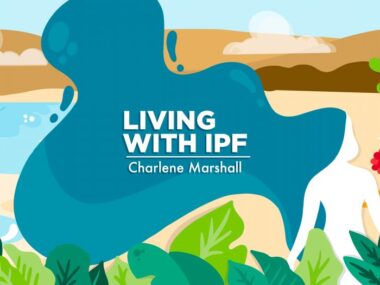From testing my pulmonary function to getting biopsy results
Even short wait times can seem long when a procedure isn't routine
Written by |

My recent pulmonary function test (PFT) results indicated a decline in all the areas it measured. That’s not unusual for me. In the spring, my PFT numbers had declined, as well, leading to a diagnosis of pneumonia that was treated with antibiotics.
This time a CT scan was ordered. The radiologist shared the following impression upon reviewing the CT: There is “worsening ground glass opacities in the lower lobes and lingula suspicious for an ongoing inflammatory pneumonitis, such as drug reaction or acute fibrinous organizing pneumonia in a patient with diminishing pulmonary function.”
While I was still processing those 32 words, I received a call from the transplant clinic at Inova Fairfax Hospital here in Virginia to schedule a bronchoscopy for me on Aug. 7, a Thursday.
Within days, a follow-up
When I was diagnosed with idiopathic pulmonary fibrosis (IPF) in January 2017, I heard the phrase “ground glass opacities” (GGO) for the first time. But until this CT report, I hadn’t heard it since my bilateral lung transplant in July 2021. In discussions with my care team, I learned that GGO is an indication of increased inflammation, which prompted them to conduct a new bronchoscopy. I was scheduled for it within days of the CT results.
It wasn’t until I was lying in pre-op for the bronchoscopy that I learned the doctor was going to conduct a lavage and biopsies during the procedure. The lavage, I knew, had become routine during my bronchoscopies; a small amount of fluid is released inside my lungs and then collected for analysis.
But biopsies during a bronchoscopy have not been routine for me. In them, a small amount of tissue is clipped from the interior of the lung and sent for pathology — or more simply said, for study. This process is not a needle biopsy, however; that’s sometimes used to confirm a diagnosis of pulmonary fibrosis, though a CT scan is still the primary tool.
When a biopsy is conducted during a bronchoscopy, the procedure may last longer. One of the associated risks is a pneumothorax, or collapsed lung. Before the procedure, the doctor advised me that she’d be observing for a brief period to ensure the lung wasn’t compromised during the procedure.
My results
The lavage fluid collected from my left lung was analyzed for any bacterial or viral abnormality. The biopsy samples collected from my right lung were analyzed primarily for any signs of pulmonary allograft rejection, given my transplant. These products go from the operating room to the lab, with results usually available in three to four days.
The lavage analysis came back on Sunday, Aug. 10, with no indications of pneumonia. Good news!
I spent a long four days awaiting the biopsy results. But they were available on Monday, Aug. 11, and showed no signs of pulmonary allograft rejection. More good news!
On my IPF journey, I’ve often found that patience is an awesome trait to have available. I know my care team took progressive steps from the PFT to the CT and finally the bronchoscopy. The end results ruled out two primary concerns for a post-transplant patient: pneumonia and rejection.
My body needed to rest, and I’ll have a clinic visit later this week. A lifetime of medical surveillance is key to helping me live my best life. And living my best life is how I make every breath count.
Note: Pulmonary Fibrosis News is strictly a news and information website about the disease. It does not provide medical advice, diagnosis, or treatment. This content is not intended to be a substitute for professional medical advice, diagnosis, or treatment. Always seek the advice of your physician or other qualified health provider with any questions you may have regarding a medical condition. Never disregard professional medical advice or delay in seeking it because of something you have read on this website. The opinions expressed in this column are not those of Pulmonary Fibrosis News or its parent company, Bionews, and are intended to spark discussion about issues pertaining to pulmonary fibrosis.








Kathleen Podesta
I was diagnosed with IPF in 2019. So far not much has changed and I'm not on oxygen but am taking Cellcept and 4mg steroids a day. I have ground glass opacities among other things in both lungs. You have enlightened me since I am always afraid to ask my Pulmonologist any questions but I know I should. Every 6 months I take a breathing function test and pray that my levels don't retreat because I will have to see it right then and there. My nails already show signs of PF although my nails have curved since I was a young girl, they now are not looking like my own. Thank you for sharing your health with me and everyone who read your story. Stay the best you can be and I will also❣
Luann Warren
Thank you for your health update! I’m glad you got good news from your tests. The waiting for answers is one of the hardest things, when facing so many unknowns. Take care of yourself sir!